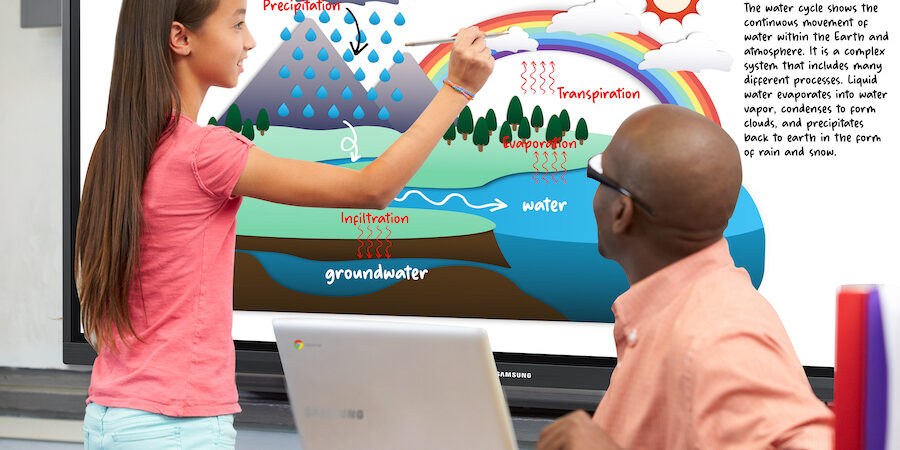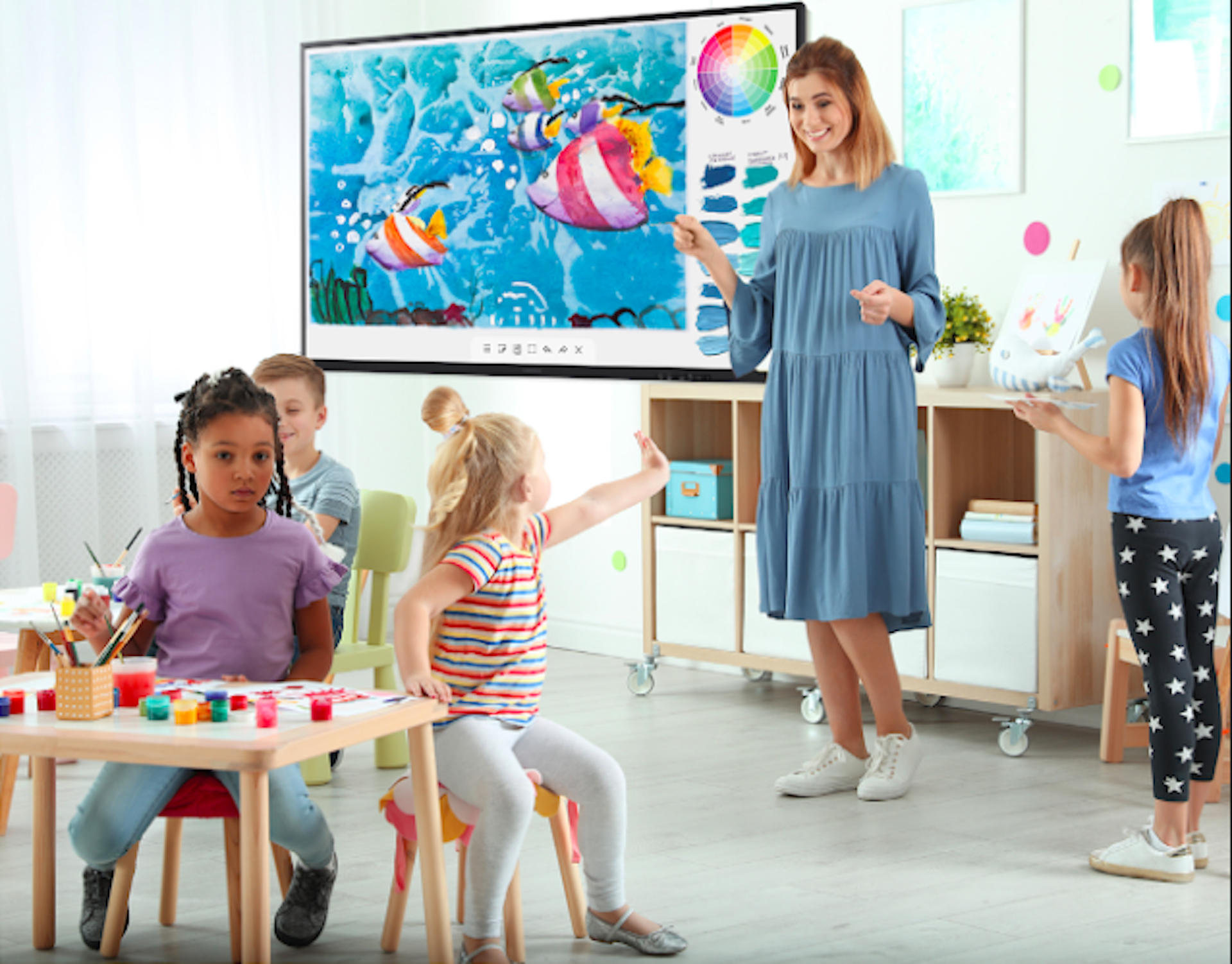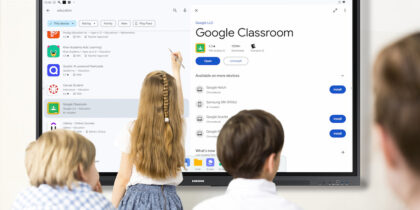Interactive whiteboards are effective tools in the classroom, helping to keep students engaged with what they’re learning. Also called e-boards, smart boards and interactive displays, these devices allow for more collaborative lessons and provide instant access to a vast library of open educational resources (OERs).
Here’s how e-boards can be used in the classroom, and how educators can maximize the technology’s potential:
How to use an e-board for teaching
Interactive boards for classrooms replace old-school chalkboards and dry-erase boards with digital technology, opening up a range of additional capabilities. A Samsung Interactive Display, for example, allows educators to create highly visual presentations, access digital resources, run multimedia files and annotate directly on screen. Multiple students — as many as 20 — can work on the screen simultaneously, and remote learners can view the content from their home devices.
How to create an interactive experience for all students
Today’s digital e-board offers tremendous capabilities for the modern classroom, especially when it comes to embracing all students.
Firstly, e-boards can save and share lessons and material far better than old-school chalkboards and whiteboards. In fact, with an interactive display, classroom lessons become living documents to be revisited, refined and expanded in real time. Furthermore, the flexibility of use and array of features can help teachers design and deliver lessons to suit different student levels and learning styles. While many people are auditory learners, others thrive on the visual cues of text, images and video — and others learn best with tactile, hands-on examples.
It’s also easy. Samsung Interactive Displays use up-to-date Android OS, providing a familiar, intuitive user interface with a home screen that can be customized with frequently used apps.
Other features that help teachers enhance interaction:
- A 3-in-1 USB-C port enables screen mirroring, touch control and external device charging (max. 65W).
- HDMI Out function allows screen content to be shared easily on a larger screen in an auditorium or lecture hall.
- Dual pen function allows teachers to switch between two different writing tools instantly when they flip the double-sided nib.
- Multi-touch capabilities allow many students to write and draw on the e-board at the same time, ideal for group work.
When used to their full potential, e-boards can elevate the quality and dynamism of the lesson — and the success of all students.
Read the definitive guide on interactive displays
See how educators can create an inclusive learning environment with the right technology. Download Now
How to find open educational resources for e-boards
Combined with open resources, e-boards put a world of knowledge at your fingertips. These OERs provide a vast library of educational materials for educators, from full e-books and lecture notes to images, videos and animations. Best of all, OER materials are available to all with open licenses. That means educators and students alike can download, copy, use, modify and reshare as they wish. And with the e-boards, teachers can work with what they are already using like Kami and Nearpod but also Microsoft 365 and Google platforms. Using the inputs, they can make their laptop, desktop or Android tablet a large screen to continue to use the tools they find effective. Teachers can also access their online tools directly on the displays with the built-in browser and log directly into OneDrive or Google Drive to pull up files.
As a starting point for exploring all this material, OER Commons provides a single entry point to more than 50,000 open resources. Educators can also make use of the U.S. National Science Digital Laboratory, which has a huge OER collection across dozens of categories. Other hubs for high-quality OER materials include Open-Up Resources, which is a collection of openly licensed curricula authored by experts, and Open Washington’s Open Resource Repository, which is a curated collection of links to open textbooks, images, courses, videos and more.
In addition, teachers can tap into resources that focus on instruction with electronic boards. Sites like Topmarks provide free-to-use educational materials such as lesson plans and classroom activities, specifically tuned to e-boards and other interactive whiteboard solutions. For more ideas, check out EduBirdie’s extensive list of free interactive whiteboard resources.
Breaking down barriers, expanding opportunity
The main idea behind OERs is to reduce educational barriers — like cost, format and language — and ensure teachers have access to a wealth of materials to bolster their lesson plans and better engage their students. OERs also allow teachers to share learning materials with other teachers around the world, saving each other time on lesson planning.
All of this material is digital or digitized, which makes interactive displays the optimal medium for accessing and delivering it. This technology can directly engage students and encourage collaboration on a big screen while allowing classroom access to locally stored and online files. With this combination of smart classroom technology and OERs, educators have even more tools to bring their best learning ideas to life.
Find more free lesson planning resources for digital learning and discover how one high school’s connected campus elevates education and engagement.









